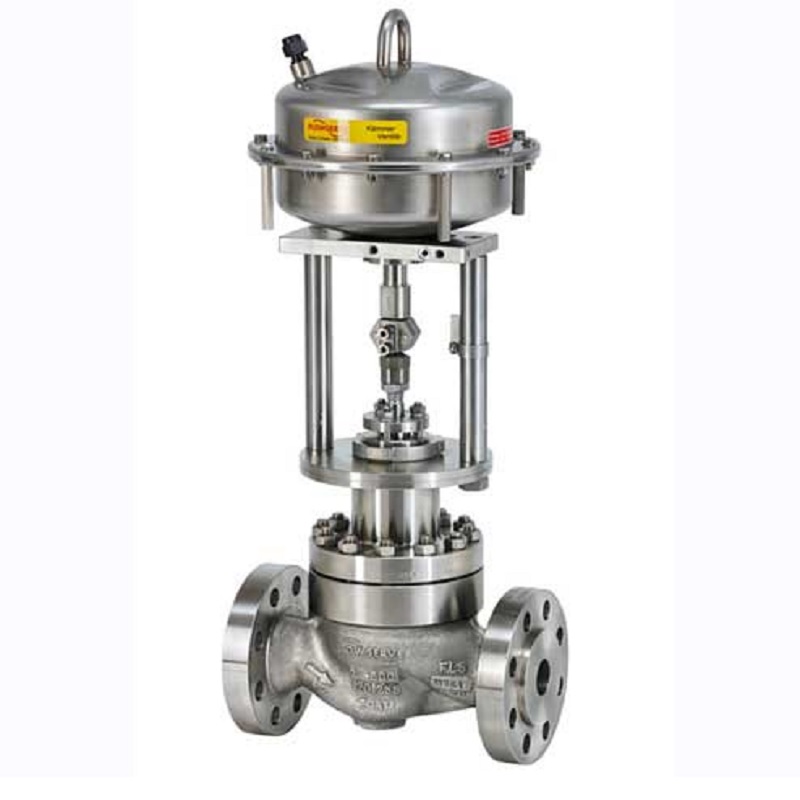The Function of Control Valves in Fluid Circulation Monitoring Solution
Wiki Article

Maximize Power Savings and Convenience With Advanced Structure Automation Controls
In the world of modern design and center management, the integration of advanced building automation manages stands as a pivotal innovation. By harnessing the power of automation, structures can adapt, respond, and progress in means that were as soon as unimaginable.Energy Efficiency Benefits
Energy performance advantages can substantially minimize power intake and functional prices in structures. By executing energy-efficient practices and innovations, building owners and operators can accomplish considerable cost savings while additionally adding to ecological sustainability. Among the main benefits of improving energy performance in structures is the reduction of energy expenses. Energy-efficient systems, such as sophisticated structure automation controls, can optimize using sources like illumination, air conditioning, and home heating, resulting in lower energy costs gradually.Additionally, improved power performance can lengthen the life expectancy of structure devices and systems. By operating more successfully, cooling and heating systems, lighting fixtures, and other building parts experience much less deterioration, resulting in minimized maintenance and substitute prices. Additionally, energy-efficient buildings usually command greater home worths and rental rates, supplying lasting monetary advantages to proprietors.
In addition, energy effectiveness can enhance resident convenience and efficiency. Appropriately regulated indoor settings with ideal illumination and thermal conditions develop a more conducive and pleasant office, causing boosted worker satisfaction and efficiency. In general, the energy effectiveness advantages connected with sophisticated structure automation controls are complex, incorporating expense savings, environmental stewardship, and passenger well-being.
Boosted Comfort Control
Enhancing comfort control in building atmospheres needs an advanced combination of sophisticated automation systems for optimum passenger health. By using innovative building automation controls, centers can tailor the indoor environment to satisfy the details needs and choices of residents. These systems enable specific policy of air flow, lighting, and temperature, creating a efficient and comfy environment. Owner fulfillment and productivity are closely connected to thermal comfort, making it necessary to have systems in area that can adapt to transforming conditions in real-time.Improved comfort control exceeds basic temperature adjustments. It consists of attributes such as tailored setups, occupancy sensors, and natural light application to create a responsive and dynamic atmosphere. By including these sophisticated controls, buildings can not just enhance comfort however also boost energy performance by optimizing system procedures based upon actual tenancy and use patterns. Ultimately, focusing on passenger convenience via innovative automation systems leads to a much more delightful and healthier interior environment.
Functional Efficiency Improvements

Moreover, the implementation of real-time surveillance and analytics devices allows building drivers to recognize energy inefficiencies and operational wikipedia reference anomalies without delay. By continuously checking power usage patterns and system performance metrics, modifications can be made in real-time to optimize power usage and guarantee peak operational efficiency. control valves. Additionally, integrating demand response methods into structure automation controls can even more boost functional performance by dynamically changing energy usage based on grid problems and prices signals
Indoor Environment Optimization
Effective indoor climate optimization is a fundamental facet of structure automation controls, guaranteeing residents' comfort and wellness while optimizing energy financial savings. By using sophisticated sensors and controls, developing automation systems can constantly readjust and keep track of temperature, moisture levels, air top quality, and ventilation to create an optimum indoor setting. Preserving consistent and comfy problems not just enhances resident fulfillment yet likewise boosts performance and total wellness.Interior environment optimization also plays a crucial role my response in power performance. By fine-tuning air conditioning, home heating, and air flow systems based upon real-time information and tenancy patterns, constructing automation controls can significantly reduce power intake - control valves. Carrying out strategies such as demand-controlled air flow and thermal zoning can help lessen energy waste while making certain that each location of the structure obtains the essential conditioning.

Lasting Atmosphere Creation
Building automation regulates not just enhance interior environment conditions for energy effectiveness and owner comfort but also lay the structure for creating a sustainable environment with tactical monitoring of sources and systems. By integrating sophisticated structure automation technologies, such as sensing units, actuators, and smart software, facilities can monitor and change energy use in real-time to decrease waste and reduce their carbon footprint. These systems allow predictive maintenance, recognizing potential problems before they intensify and maximizing devices efficiency to enhance durability and effectiveness.In addition, sustainable setting creation extends beyond energy administration to incorporate water conservation, Going Here waste decrease, and interior air top quality improvement. Building automation controls can manage water usage, discover leaks, and ensure proper garbage disposal techniques, adding to general sustainability efforts. Furthermore, by checking and controlling air flow and filtering systems, these innovations improve occupant health and performance while reducing energy consumption related to cooling and heating operations.
Verdict
In conclusion, advanced structure automation regulates offer significant advantages in regards to energy cost savings, convenience control, operational effectiveness, indoor climate optimization, and producing a sustainable atmosphere. By implementing these controls, buildings can attain optimum efficiency while minimizing power intake and enhancing occupant comfort. It is apparent that using sophisticated automation technology is important in improving structure efficiency and developing an extra lasting future.Energy efficiency advantages can dramatically decrease power usage and operational prices in structures. In general, the energy effectiveness benefits associated with innovative structure automation controls are complex, including cost savings, environmental stewardship, and occupant health.
In addition, integrating demand response strategies right into building automation controls can additionally enhance functional performance by dynamically adjusting energy usage based on grid problems and pricing signals.
Building automation controls not only enhance indoor climate conditions for power effectiveness and passenger convenience however likewise lay the structure for creating a lasting environment via tactical administration of systems and sources.In verdict, progressed structure automation controls deal considerable benefits in terms of energy financial savings, comfort control, operational effectiveness, indoor environment optimization, and producing a sustainable environment.
Report this wiki page